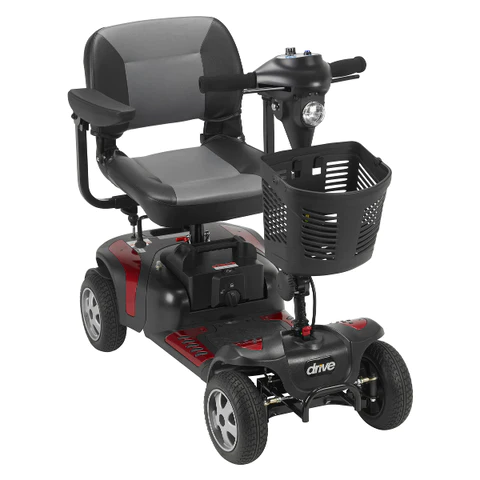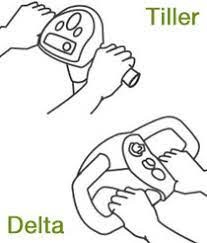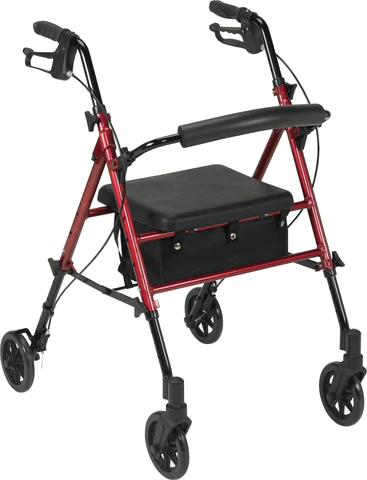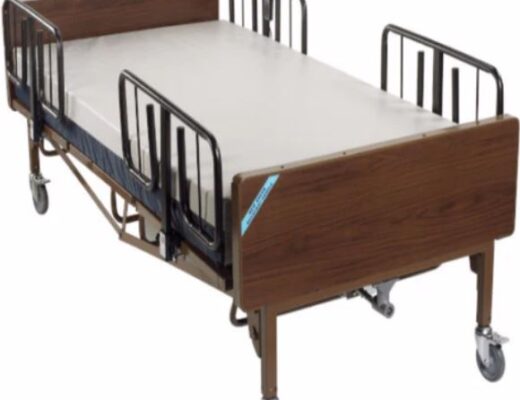Discover the Best Technology Solutions for Your Needs
Today, people are facing common health issues caused by factors such as age, obesity, and chronic diseases that can, unfortunately, lead to loss of mobility. According to the World Health Organization, over one billion people need an assistive device to help them with activities of daily living. Additionally, more than two billion people will need at least one adaptive product by 2030.
Whether it is a disease like a pulmonary issue or a physical ailment, these matters can cause problems
for people even walking just a few yards. These health concerns can change your maneuverability
causing restrictions and limitations in your everyday life.
Additional examples of disabilities and conditions that can have an impact on mobility, fatigue and
pain levels are:
● Back and neck problems
● Obesity
● Impairments due to stroke
● Heart and lung issues
● Accidents or injury
● Arthritis
● Difficulties in balance
● Fibromyalgia
● Multiple sclerosis
● Partial or total paralysis
● And more…
There are many conditions and disabilities to take into consideration that could impact your coordination,
dexterity, strength, speed, and stamina. Luckily, with the advancements in technology, there are solutions
to assist you in combating possible limitations.
A personal mobility aid has given a new way of life to many individuals. There has been a significant
increase in using personal mobility aids, worldwide. Users have found new freedom and
independence in their day-to-day activities. While others have found the beneficial use of mobility aids as an easier way to navigate around their home.
Regardless of age or gender, the use of mobility aids has become increasingly popular over time. Let’s
seek to understand specifically who is benefiting from mobility aids with statistics from
Disabled-World.com:
Individuals who struggle to walk have a new opportunity to regain control of their daily activities and have substantially improved the quality and perspective of life with their mobility aids. Mobility aids are created in a wide range to meet people’s needs, such as power wheelchairs, rollators,
walkers, and canes. Typically, those who chose to use mobility devices have found a variety of benefits ranging from reducing overall pain, increasing confidence, more personal independence, and higher self-esteem.
Which Mobility Device is Best for Me?
When considering powered mobility devices, there are a couple of factors that you should keep in mind:
● Type
● Ease of transportation
● Size
● Weight
● Dimensions of vehicle
● Speed
● Storage availability
Power Wheelchair Controls -Power Wheelchairs
There are familiar manually operated devices such as wheelchairs, walkers, cranes, and
crutches, which have been commonly used in the past. However, the advancement in technology has provided other power options for people to consider. A Power Wheelchair is equipped with a joystick that is on the end of your armrest. It is comfortable and conveniently operated by small movements of the joystick. You can maneuver simply by moving the joystick front to back or side to side. While this is a great option for many people, those who may have restrictions on their motor skills may have difficulty using a power wheelchair.
Factors to consider helping you determine if a mobility scooter is the best option for you:
First, determine your personal upper body and arm strength. Verify if you can extend your arms and
hands simply in front of you. Furthermore, are you capable to do so and hold onto a supportive bar?
In addition, while in this position, are you able to sit vertically, adequately, and with comfort?
Delta and Straight Tiller Controls – Scooters
Mobility Scooters are operated with a straightforward tiller, also known as the handlebar, to assist you in
uncomplicated navigation and control. With the option to adjust, you can find the custom fit for each
user. However, if you are a person who experiences issues with arm stability or flexibility, you could
experience discomfort while operating the scooter due to long periods of time of having your limbs
outstretched.
Hand Dexterity for Steering and Controlling:
Depending on your personal agility, there are options for you to consider that will help you in controlling
powered mobility aid.
● If you have the dexterity to apply pressure to your hands, the Straight Tiller handlebars are a
great option for you.
● If you lack dexterity in your hands, especially for an extended amount of time, a second option
to consider would be the Delta handlebars.
If these considerations can be met, a mobility scooter may be an option for you.
Rollator Walker
Individuals who aren’t looking for a powered mobility aid have found a rollator to be the best fit for their lifestyle. If you have mild weakness or mild balance issues, a rollator may not be the best option for you. It may not be recommended for someone who needs to use the walker as weight-bearing assistance
while walking. If you find yourself using a rollator as weight support through the handles, it may interfere
with your overall safety. This is primarily because of how easily the device moves on the four wheels.
Individuals who use portable oxygen have found rollators to be a great option for them. Oxygen can be
transferred in a couple of ways, depending on your preference. With this personal mobility device, you
can store your personal oxygen by placing it in the basket, or on top of the seat for your convenience.
Also, if you are someone who may need to sit down frequently while walking long distances, the
seat is a great function to make use of.
Brakes are readily available and located directly under the handles. You can apply pressure to the
handlebars in a downward motion to activate and lock the brake function. This will help stabilize the
rollator and allow you to safely use the seat. The second way to use the brakes is to squeeze the handles
in an upward fashion. This is helpful in slowing down the rollator, and providing more control for the
user, especially when going on a downward-inclined surface. Use the rollator in your normal walking
pattern. The walker will move with you at your personal pace. The rollator also has swivel wheels in the
front which help you navigate the device with ease.











No Comments